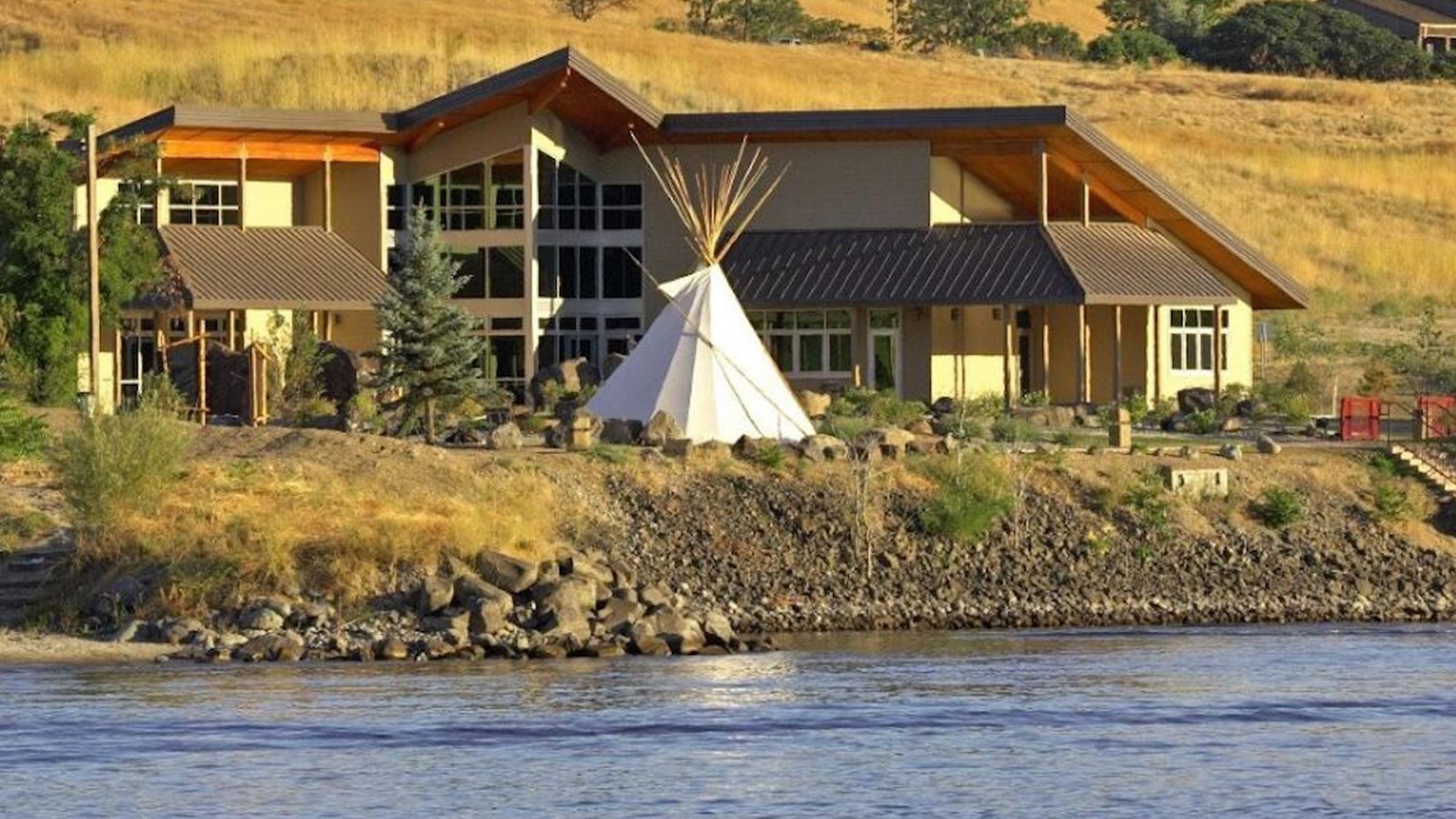Last updated: October 5, 2020
Place
Hells Gate State Park and Lewis and Clark Discovery Center

Benches/Seating, Canoe/Kayak/Small Boat Launch, Entrance Passes For Sale, Gifts/Souvenirs/Books, Historical/Interpretive Information/Exhibits, Information, Information - Maps Available, Information - Park Newspaper Available, Information - Ranger/Staff Member Present, Information Kiosk/Bulletin Board, Parking - Auto, Parking - Boat Trailer, Parking - Bus/RV, Permits Issued, Picnic Table, Restroom, Restroom - Accessible, Scenic View/Photo Spot, Showers, Theater/Auditorium, Trailhead, Trash/Litter Receptacles
Lewis and Clark NHT Visitor Centers and Museums
This map shows a range of features associated with the Lewis and Clark National Historic Trail, which commemorates the 1803-1806 Lewis and Clark Expedition. The trail spans a large portion of the North American continent, from the Ohio River in Pittsburgh, Pennsylvania, to the mouth of the Columbia River in Oregon and Washington. The trail is comprised of the historic route of the Lewis and Clark Expedition, an auto tour route, high potential historic sites (shown in black), visitor centers (shown in orange), and pivotal places (shown in green). These features can be selected on the map to reveal additional information. Also shown is a base map displaying state boundaries, cities, rivers, and highways. The map conveys how a significant area of the North American continent was traversed by the Lewis and Clark Expedition and indicates the many places where visitors can learn about their journey and experience the landscape through which they traveled.
About 15,000 years ago, at the end of the great ice age, huge floods carved through this area, which became known as the gateway to Hell’s Canyon, today the deepest river gorge in North America. The dramatic basalt rock formations, abundant wildlife, and perfect rapids make Hell’s Canyon a popular location for backpacking, fishing, and whitewater adventures. Many visitors enjoy the jet boat rides and fishing charters, too.
The site of Hells Gate State Park was once the location of a Nez Perce Village. Little is left of the village, but depressions south of the campground are the remnants of pit houses used for years by the Nez Perce as they fished for lamprey near Asotin Creek.
Lewis and Clark traveled through this area in the fall of 1805 as they continued down the Clearwater River until it entered the Snake. The Lewis and Clark Discovery Center, located within the park, features indoor and outdoor displays and a film describing the journey of Lewis and Clark through Idaho. The Center has a two-acre outdoor interpretive plaza on the banks of the Snake River with a beautiful moving stream featuring sculptures by artist Rip Caswell. While you're at the Center, don't miss the 32-minute movie called "From the Mountains to the Sea: Lewis and Clark in Idaho," and be sure to stop by the Lewis and Clark gift shop.
Hells Gate State Park offers plenty of outdoor fun – from camping to biking, boating to horseback riding, and disc golfing to fishing. To learn more about the park and the Lewis and Clark Interpretive Center, go to https://parksandrecreation.idaho.gov/parks/hells-gate.
